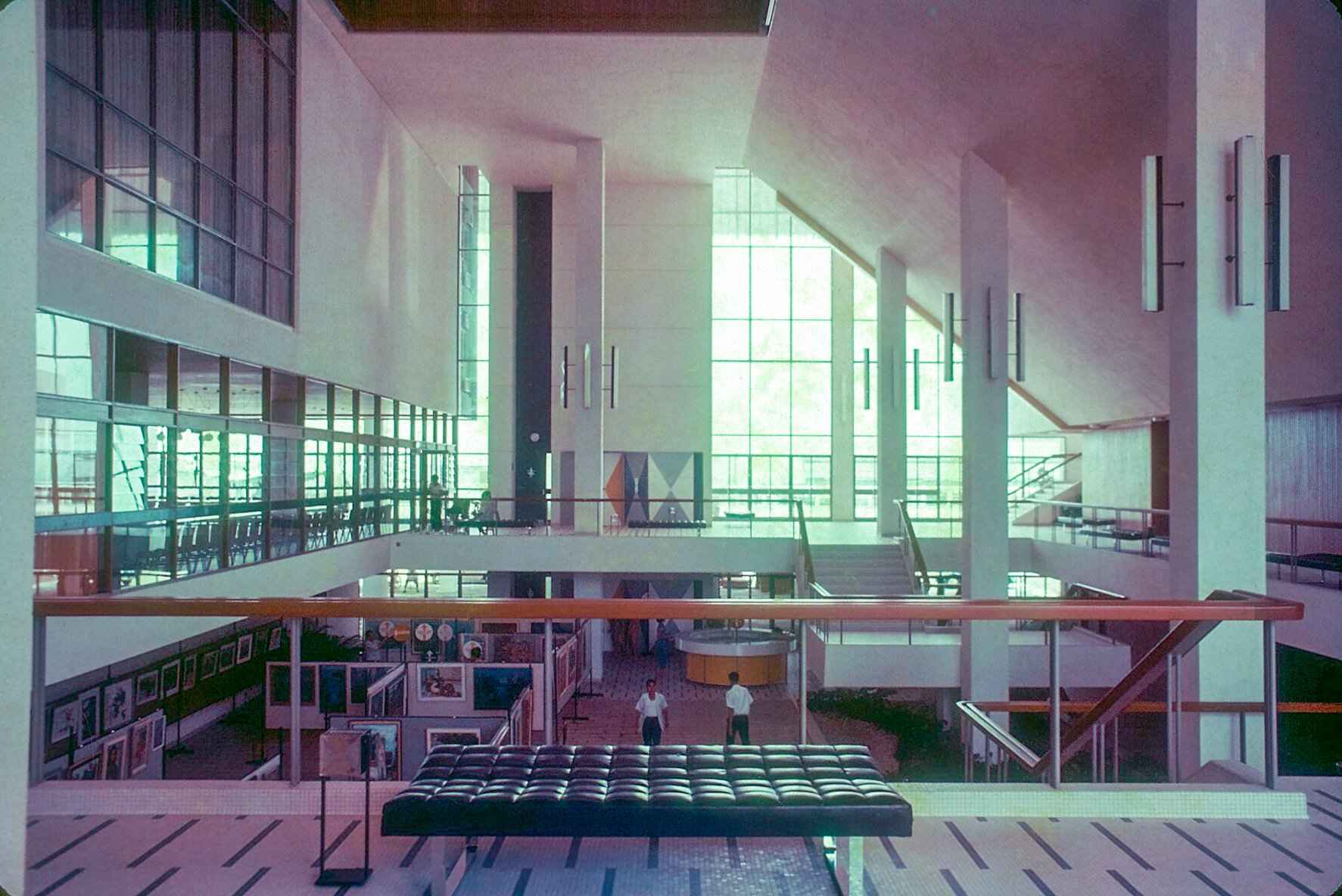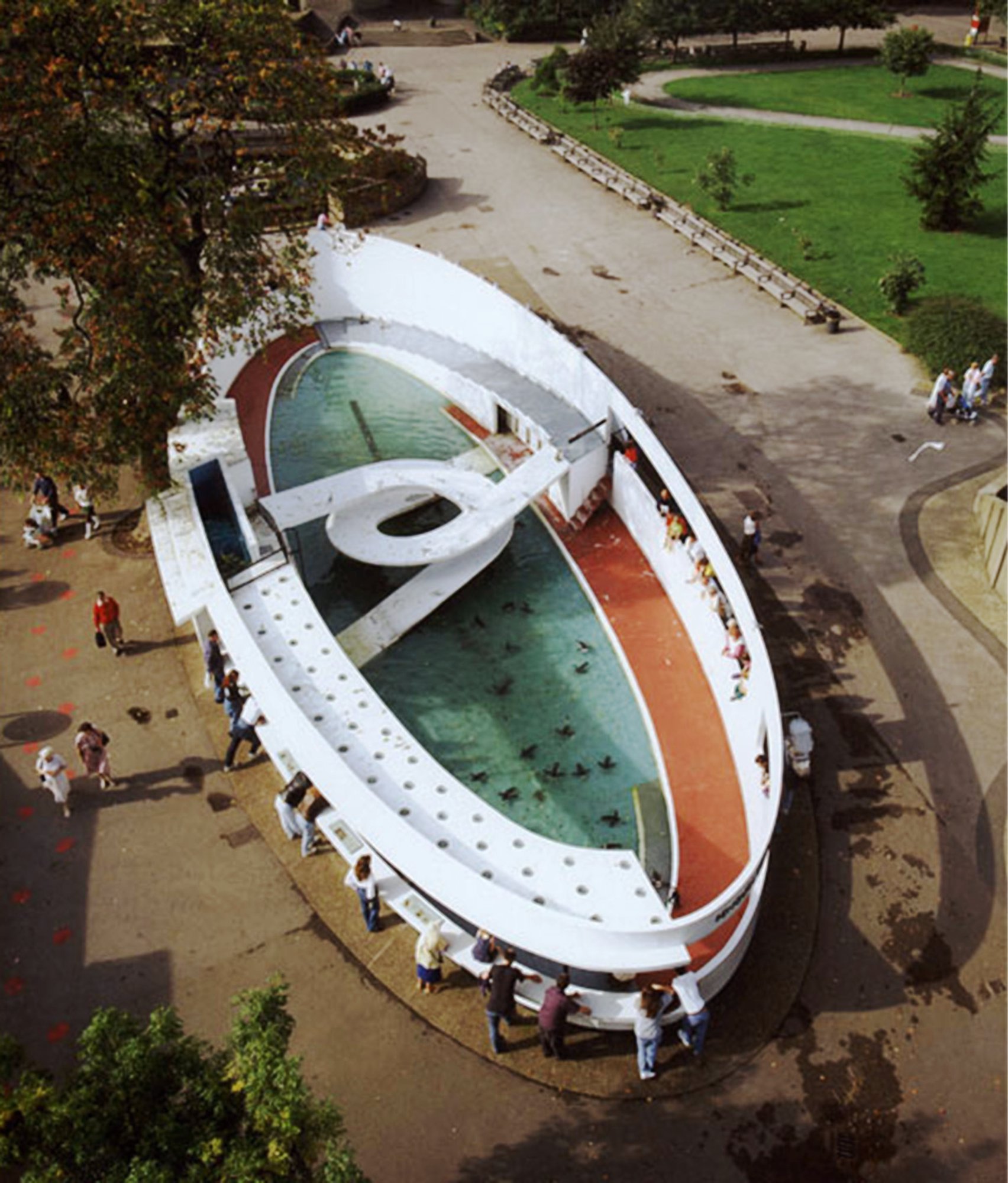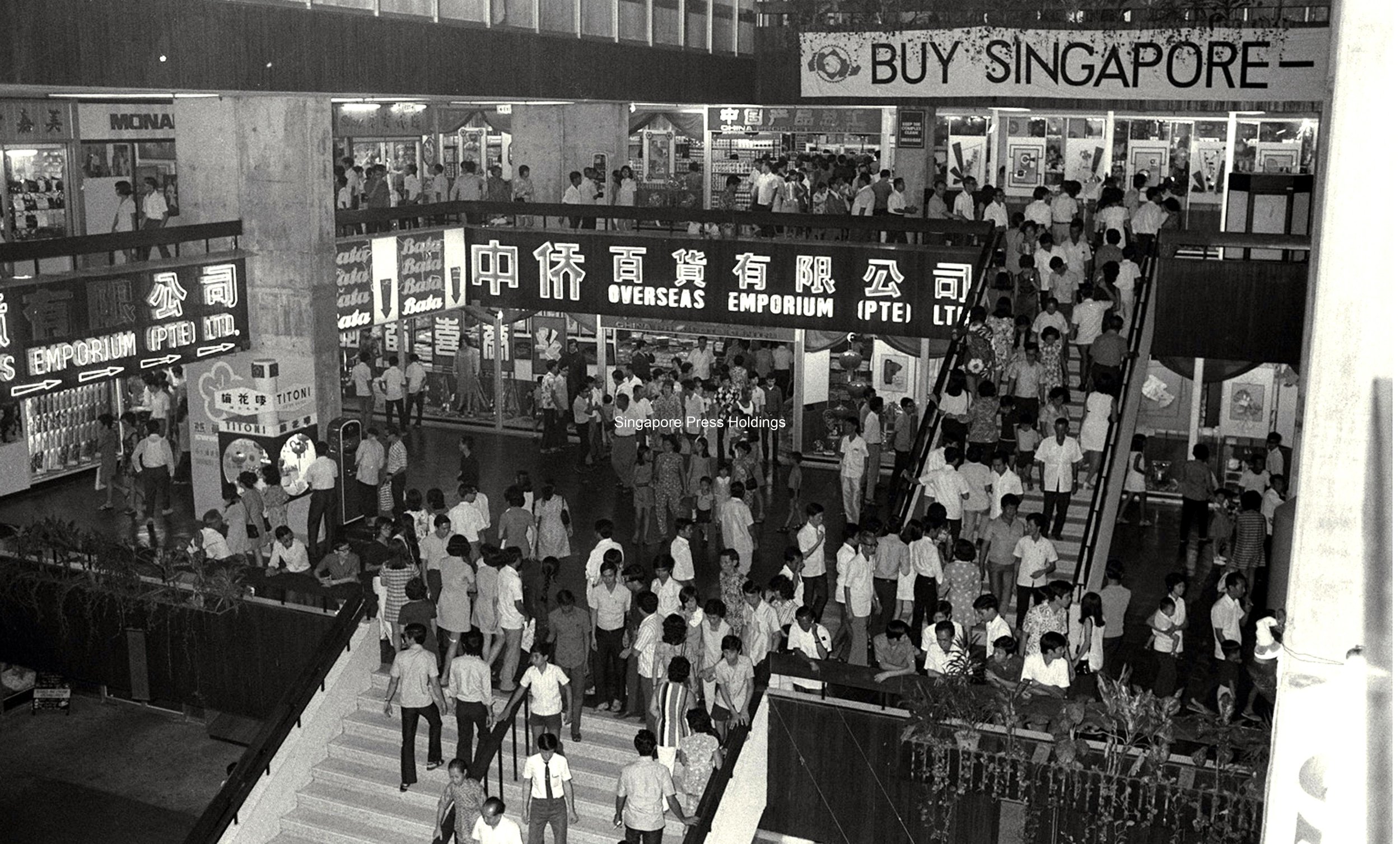404 Error.
Sorry! We couldn’t find the page you were looking for.
This might be because:
There is an error in the URL entered into your web browser. Please check the URL and try again.
The page you are looking for has been moved or deleted. You may choose to browse other pages, or try a keyword search for the content you are seeking in the search bar below.
Latest News and Publications
Docomomo Singapore chapter welcomes the Urban Redevelopment Authority’s (URA) support for the voluntary conservation of Golden Mile Tower in Beach Road. Its offer of bonus Gross Floor Area (GFA) in exchange for conserving the development’s cinema block follows a similar approach of its neighbour, the former Golden Mile Complex. The on-going transformation into The Golden Mile and the Aurea shows it is possible to conserve and rejuvenate large-scale strata-title buildings.
Did you know that theSingapore Conference Hall, a national monument, was previously known as the Singapore Conference Hall and Trade Union House (SCHTUH)? Although the headquarters of the labour movement has long since been relocated from the building at Shenton Way, it was a critical part of its heritage.
Docomomo SG would like to express its gratitude to Minister Desmond Lee for our substantive partnership and collaboration over the years. Our first interactions with Minister Lee began in 2019 with our race to save the iconic Pearl Bank, since demolished.
Docomomo Chair Ho Weng Hin and Exco member Ronald Lim presenting Mrs Lena Lim a printed copy of Docomomo Singapore’s Position Paper on the People’s Park Complex, as a token of appreciation for the generous donation.
Why a Precinct Improvement Plan (PIP)?
The first is to overcome the limitation for the expansion of the PPC and to incorporate future developments into an overall framework that extends the original design ideas found in the building.
Second, adopting the dual strategy of conservation and redevelopment that takes into account overall management at the precinct level carries with it a number of advantages or benefits, as outlined below.
Third, adopting a PIP approach allows a great design idea – the ‘City Room’ strategy’ – to be extended at the urban scale in the precinct level.
PPC boasts several connections and stitching to its surroundings which can be improved. This increased connection supports the legacy of PPC inverting the “introverted” shopping centres of the past with pedestrian entrances on all sides. PPC has the potential to become a node for on-going efforts to transform Pearl’s Hill neighbourhood.
We can take this opportunity to restore the original public and civic nature of the adjacent pedestrian mall - which has since lost this quality. Image c. 1976 vs recent image on the right.
Incentivising the conservation of PPC may springboard from the incentives offered by the Ministry of National Development (MND) in 2021 to gazette Golden Mile Complex (GMC) for conservation.
A centrepiece of the country’s first urban renewal zone, PPC was a significant update to Chinatown’s urban environment and provided the people with a cleaner and more manageable space for mercantile activities.
This reflected the state’s growing pursuit of liveability. The focus on providing vibrant urban spaces materialised in the form of the City Rooms, which were the first of its kind.
The Summary Statement of Significance presents 3 aspects - Architectural, Urban & Historical and Social, under which the values of PPC are showcased.
This introductory essay provides an overview of the multiple ‘histories’ of People’s Park Complex (PPC): the birth of People’s Park as a key social space in colonial-era Singapore’s Chinatown, and later, its evolution into a bustling commercial space as ‘zan zyu baa saat’; the post-independence, state-led ‘urban renewal’ programme which precipitated the ‘rebirth’ of People’s Park alongside comprehensive redevelopment of its surrounds; and the architectural development of PPC as a new modernist nexus for Chinatown, shaped by the avant garde ideas of the young architects of Design Partnership.
Join the authors Calvin Chua, Sam Chia, and Finbarr Fallon in this event to hear them talk about the little-known stories and intriguing analyses of Singapore’s modernist heritage using stunning visuals.
As we begin the new year, we would like to invite you to become a member of Docomomo Singapore and join our growing community dedicated to preserving and celebrating modern architecture and urban heritage as we look back on an eventful and meaningful year in 2024.
On 14th December 2024, Docomomo Singapore organised a tour to Unit 8, a project designed by William Lim Associates (WLA). Completed in 1984, the architectural team for Unit 8 was helmed by Carl Larson and Ar. Richard Ho. With the tour led by Ar. Richard Ho, who had spent considerable time and effort as a fresh graduate working on the detailed design resolution of the condominium, the participants had the opportunity to hear from his first-hand experience about the opportunities, challenges and constraints of planning the design within a triangular site along Holland Road.
On 17 August 2024, Docomomo Singapore ran a workshop for our volunteers at the National Library of Singapore.
Alongside archival research, this article has been written based on information and materials generously shared with Docomomo Singapore by Tange Associates during an interview with Paul Tange (Chairman, Senior Principal Architect) and Yasuhiro Ishino (President, Senior Principal Architect).
Some have likened it to a traditional Japanese hat. Others see the outlines of a Star Destroyer spaceship from the futuristic movie Star Wars. Without a doubt, the roof of the Singapore Indoor Stadium is one of—if not, the most—distinguishing feature that has made it a familiar icon along the Kallang Basin today.
On 20th January 2024, Docomomo Singapore organised a tour of C-1 Holland Park, a rare and highly intact 1960s private residence designed by local pioneer architect, the late William Lim, when he practised with Malayan Architects Co-Partnership. Led by Docomomo founding member Ronald Lim and contributor Jacob Meyers, the sold-out event was part of the ‘Eat Play Love’ exhibition produced by local artist Tan Ngiap Heng, the youngest child of the late Dr Tan Kheng Khoo and Mdm Gunn Chit Siew, for whom the house was built.
A rare opportunity to experience the unadulterated creative vision of one of Singapore’s most important modernist architects at Docomomo Singapore architecture tour at C-1 Holland Park.
Curated by Ronald Lim, a founding member of Docomomo Singapore, the beautifully designed and meticulously assembled exhibition features over 500 archival artefacts from the architectural firms William Lim Associates and W Architects. The former was founded by the late pioneer architect William S. W. Lim. When Lim retired in 2003, the firm was renamed W Architects and Mok Wei Wei took the helm. The exhibition is based on the archival materials donated by Mok, who is also Docomomo Singapore’s advisor, to the Singapore Architecture Collection.
If you missed these two tours, fret not. We are in the midst of planning for a few more tours, including a tour of a rare 1960s modernist house that has been well-preserved in its original conditions. The house was designed by one of the most important modernist architectural firms in Singapore. Join our mailing list and you will be among the first to be informed about our forthcoming tours.
There are a few problems with modern architecture when it comes to conservation. First of all, the buildings are often not old enough for age to be used as the main criteria to justify their retention. In other cases, modern buildings which architects admire might be regarded by the wider public with indifference, or even hostility, although this is less of an issue in Singapore — where people have long been receptive to modernism — than in places like Britain. Often, neglect and poor maintenance may further reduce their popular appeal, as can be the case, for instance, with many of Singapore’s older strata-titled shopping malls.
The Golden Mile Complex has been vacated recently, entering a new phase of its history as Singapore’s first post-independent private mixed use megastructure to conferred conservation status. As the key landmark in Singapore’s ‘Precinct North 1’ urban renewal pilot project undergoes restoration and adaptive reuse, it is timely to cast the spotlight on People’s Park Complex, a contemporaneous and equally significant urban renewal landmark that bookended the ‘Precinct South 1’ in historic Chinatown, now threatened by enbloc sales and demolition.
Docomomo Singapore chapter is deeply concerned by the announcement that People’s Park Complex has initiated the collective sale process. Designed by pioneer Singapore architects William Lim, Tay Kheng Soon and Koh Seow Chuan of Design Partnership, People’s Park Complex is one of post-independent Singapore’s most important modernist buildings from an architectural, urban and social perspective.
Join us at Bukit Timah Turf Club on the walking tour and explore one of Singapore’s more unusual 20th century modern landscapes replete with vast lawns and lush greenery - recently earmarked for future redevelopment.
Docomomo Singapore is deeply saddened to learn of the unexpected passing of Elain Harwood, eminent architectural historian at Historic England and stalwart of the C20 Society in the UK last week.
Docomomo Singapore stands with Docomomo Thai in calling for United Overseas Bank (Thai) PCL to respect the significance of the Robot Building in Bangkok and sensitively preserve its iconic exterior.
Docomomo Singapore is pleased to announce the upcoming book "Everyday Modernism: Architecture and Society in Singapore" by Jiat-Hwee Chang and Justin Zhuang, with photography by Darren Soh", published by Ridge Books, an imprint under NUS Press. Find out more about the book and how to order here.
On a plot of land along Serangoon Road, where the National Aerated Water Company used to fill countless bottles with soft drinks like Sinalco or Kickapoo Joy Juice, a new condominium now spreads its 117 units across 18-storeys. Most of the former bottling plant, built in 1954, has given way to the Jui Residences. The condominium received their Temporary Occupation Permit (TOP) in June 2022, but the old art-deco inspired main building has been left standing to house F&B offerings on the first storey, as well as office space on the second storey. Some may call this combination of old and new an awkward architectural piggyback ride, others call it conservation.
After 22 years, the iconic facade of the Marine Parade Community Building will soon be no more as the building undergoes major upgrading with no plans by the PA to retain the mural. Interestingly, many aren't aware of the storied past of the facade and its status as Singapore's largest piece of installation art. So, some history is in order.
By Docomomo Singapore contributing writer and founding member, Darren Soh.
As an international non-profit organisation vested in the documentation and protection of significant 20th century sites and neighbourhoods, Docomomo Singapore is highly concerned about the impending destruction of Marine Parade Community Building (MPCB) - a building and artwork of high architectural, artistic, social and historical value.






























